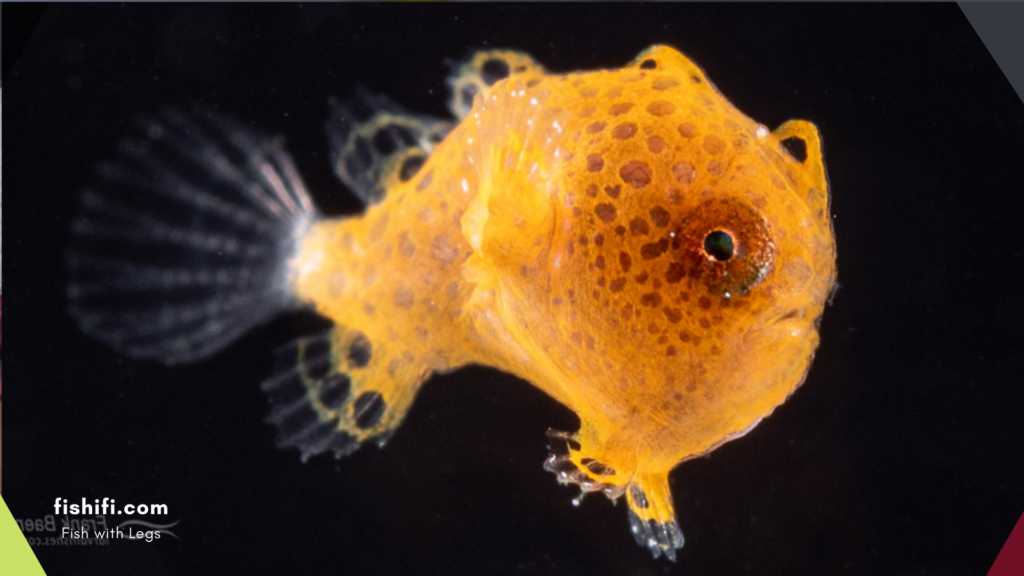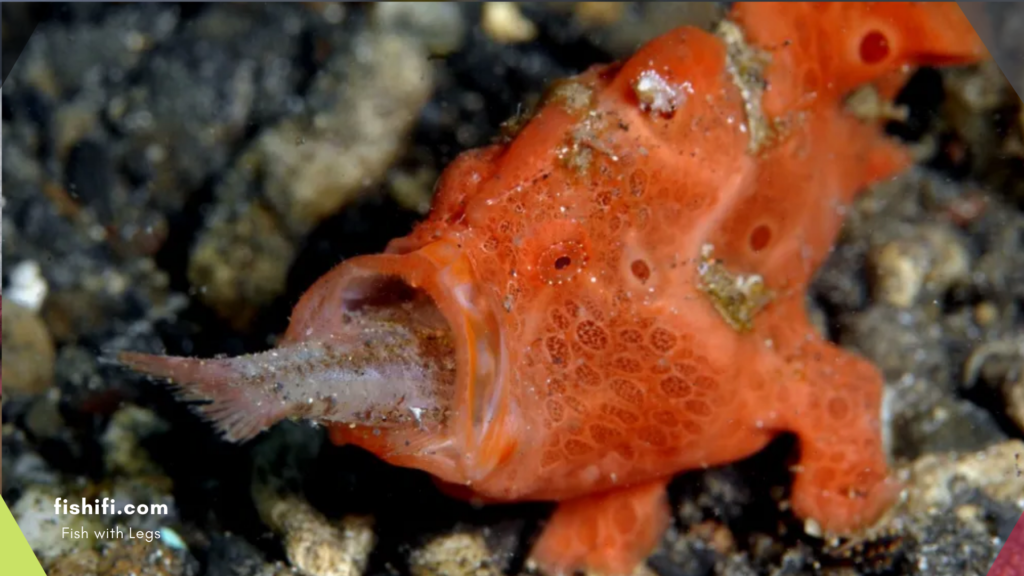Scientific Classification of Frogfish:
The incredible species of frogfish can not only swim but also move, climb over rocks, change color or pattern, and even engage in combat.
Kingdom: Animalia
Phylum: Chordata
Class: Actinopterygii
Order: Lophiiformes
Family: Antennariidae
Genus: Antennarius (which includes several species)
Species: Varies depending on the specific frogfish species.

Table of Contents
Frogfish represent an unusual area of the marine world, with their unique history, scientific classification, physiological adaptations, and compelling behaviors. Their evolution has turned them into fantastic prey species ideally adapted to their surroundings. Frogfish continue to amaze researchers, divers, and nature enthusiasts as they cover up themselves and move with their limb-like fins. we can better protect and preserve their unique place in the underwater ecosystem.
Here is a list of some notable frogfish species:
- Antennarius pictus (Painted Frogfish)
- Antennarius striatus (Striated)
- Antennarius commerson (Giant)
- Antennarius maculatus (Warty)
- Antennarius hispidus (Hairy )
- Antennarius coccineus (Scarlet)
- Antennarius randalli (Randall’s)
- Antennarius biocellatus (Twinspot)
- Antennarius dorehensis (Doreh)
- Histiophryne pogonius (Hairy)
- Histiophryne bougainvilli (Bougainville’s)
- Histiophryne psychedelica (Psychedelic)
- Kuiterichthys furcipilis (Sargassum)
- Rhycherus filamentosus (Filamented)
- Phyllophryne scortea (Warty Seadevil)
History
Frogfish have a vast evolutionary history over millions of years. They are members of the scientific family Antennariidae, which has about 60 identified species. These small, stocky fish have acquired remarkable characteristics to live and prosper in a variety of aquatic settings around the world.

Physiology and Anatomy
These fishes possess a distinct physiology that sets them apart from other marine species. They have a modified dorsal fin, which has evolved to resemble limbs. This dorsal fin, often larger than in other species, provides them with incredible versatility and mobility. It can be manipulated to grasp objects and even create an illusion of walking.
Their anatomy is well-suited for their ambush predator lifestyle. They have a stocky body shape and are covered in specialized skin appendages called dermal spinules, which aid in their camouflage. They possess a large, expandable mouth that can open wide to engulf prey almost as large as themselves.
Habitat and Distribution:
These fishes can be found in a variety of aquatic habitats, including reefs, seagrass beds, and rocky areas. They are commonly found in continental and tropical regions worldwide. Some species can even be spotted on beaches and cliffs along the ocean. These adaptable creatures have a diverse distribution, allowing divers, snorkelers, and beachgoers the opportunity to observe their unique behaviors.
Camouflage and Coloration:
One of the most remarkable characteristics of these fishes is their extraordinary camouflage abilities. They have the remarkable ability to change their coloration and patterns to match their surroundings. Using specialized pigment cells called chromatophores, they can alter their appearance to blend seamlessly into coral, rocks, or other elements of their environment. This impressive camouflage allows them to remain hidden from both prey and predators.
Walking Abilities:
These fishes are renowned for their ability to walk and hop along the ocean floor, much like a four-legged land animal. Their pectoral fins have evolved to function as legs, allowing them to navigate across the seabed, coral, and rocks. This unique adaptation provides them with exceptional mobility and enables them to access hidden prey and optimize their hunting strategies.

Feeding Habits and Behavior
These fishes are patient hunters and employ a sit-and-wait strategy to capture their prey. They use their well-camouflaged appearance to blend into their surroundings and remain motionless until prey approaches. When the opportunity arises, they use their limb-like fins to attract prey closer or launch a quick strike. they are known for their strength and can drag prey towards themselves using their “legs.”
Reproduction
The reproductive behavior of these fishes is a fascinating process that involves specific behaviors and strategies. While there may be variations among different species, the following is a general overview of the reproduction in frogfish:
- Courtship and Pairing: When the breeding season arrives, males and females begin to seek out potential mates. It is believed that factors such as the phase of the moon or chemical signals released by the female may influence mate selection. In most observed cases, the larger individual in a breeding pair is the female.
- Egg Production: As the female prepares to lay eggs, her abdomen starts to swell. This is due to the eggs absorbing water and increasing in size. The number of eggs produced can range from a few hundred to several hundred thousand, depending on the species.
- Spawning: These fishes generally engage in a behavior called free-spawning, where the female releases her eggs into the water, and the male follows closely behind to fertilize them. Some species are substrate-spawners, laying their eggs on solid surfaces such as plants or rocks. The spawning process may occur over several hours or even days.
- Parental Care: In most species, the male takes on the responsibility of guarding and caring for the eggs. After the female releases her eggs, the male typically collects and fertilizes them. He then carries the eggs on his body, usually in a special brood pouch or attached to specialized appendages, such as the pectoral fins. The male diligently protects the eggs from potential threats and ensures their proper development.
- Hatching and Early Development: The eggs are usually gelatinous masses or long ribbons. The time it takes for the eggs to hatch varies depending on factors such as water temperature. Once the eggs hatch, tiny larvae known as alevins emerge. At this stage, they possess long fin filaments and may resemble small, tentacled jellyfish. Alevins rely on their yolk sacs for nutrients while their digestive systems continue to develop.
- Transition to Juveniles: After the alevin stage, the young frogfish enter a planktonic phase, where they drift in the water column for some time. During this phase, they undergo further development and growth. Eventually, when they reach a certain size, usually between 15 and 28 mm, they transform into juvenile fish and settle on the seafloor. At this point, they acquire the characteristic appearance and behaviors of adult frogfish.
It is important to note that further research is still needed to fully understand the reproductive behavior and intricacies of different species. Nonetheless, the reproductive process of these fishes showcases remarkable adaptations and strategies that contribute to the survival and continuation of these unique creatures.

Conservation Status and Human Interactions
While these fishes are sometimes caught for reef-keeping purposes, it is crucial to ensure their conservation and protection in their natural marine habitats.
Human activities, such as overfishing and habitat destruction, can impact their populations. Raising awareness about these unique creatures and promoting responsible interaction with their environment is essential for their continued survival.

